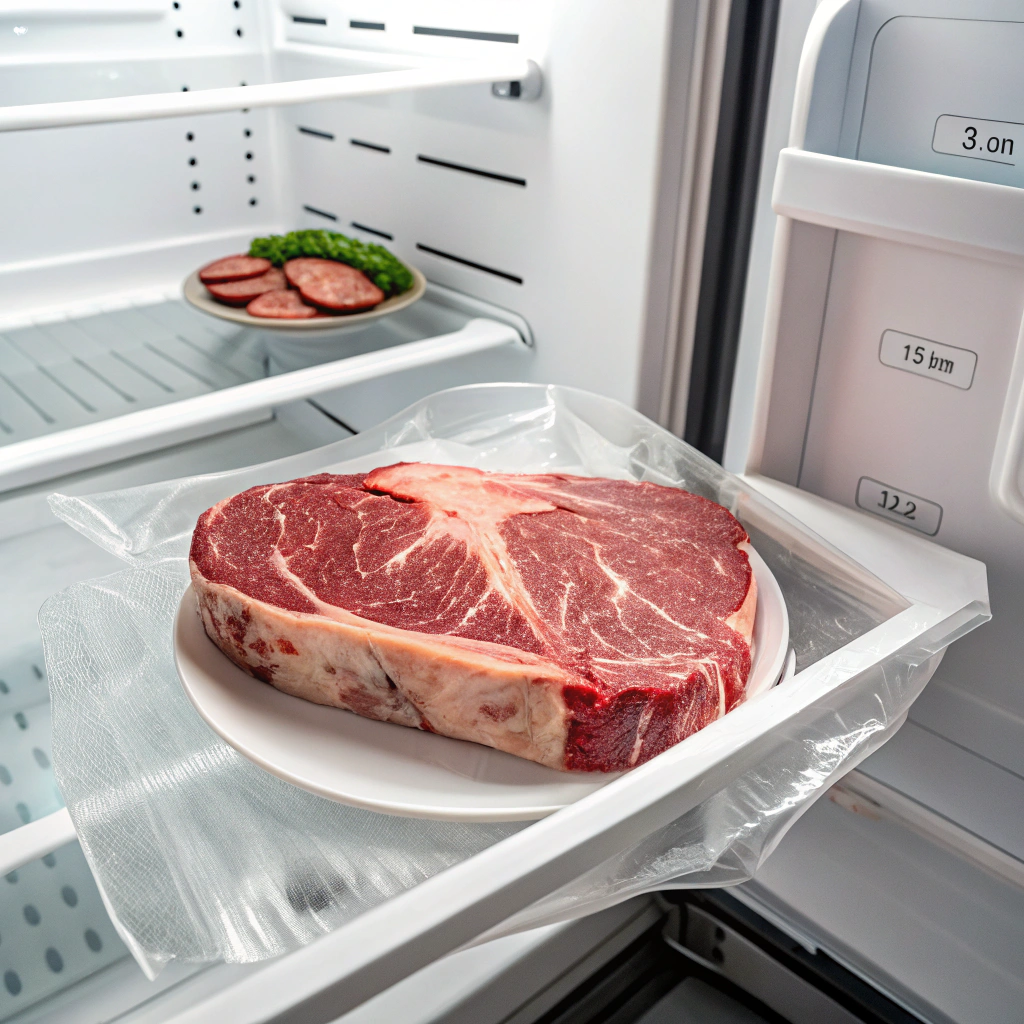The Proper Way to Thaw Meat: Safe and Effective Methods
Introduction
Thawing frozen meat is a common kitchen practice, but not all methods are safe. Many traditional thawing techniques, such as leaving meat on the counter or using warm water, have been passed down through generations. However, modern food safety guidelines warn that improper thawing can lead to bacterial growth and foodborne illnesses.
Understanding the correct methods for thawing meat ensures food safety while preserving taste and texture. This article explores the risks of improper thawing, expert-recommended techniques, and practical tips for integrating safe methods into your routine.
Why Proper Meat Thawing Matters
Thawing meat safely is crucial for several reasons:
1. Prevents Bacterial Growth – Bacteria thrive in the “danger zone” (40°F to 140°F). Improper thawing can create conditions where bacteria multiply rapidly.
2. Maintains Food Quality – Incorrect thawing can lead to uneven cooking, affecting texture and taste.
3. Reduces Health Risks – Safe thawing minimizes the risk of foodborne illnesses such as Salmonella and E. coli infections.
Now, let’s dive into the best ways to thaw meat safely.
Safe Methods for Thawing Meat
1. Refrigerator Thawing (Best Method)
Refrigerator thawing is the safest and most recommended method. It keeps the meat at a safe temperature while allowing for a gradual thaw.
How to do it:
• Place the frozen meat in a container or on a plate to catch any juices.
• Keep it in the refrigerator at or below 40°F (4°C).
• Allow 12 to 24 hours for small cuts (like chicken breasts or ground beef) and up to 24-48 hours for larger cuts (like roasts and whole turkeys).
Pros:
✔ Safest method—prevents bacterial growth
✔ Preserves meat texture and flavor
✔ Meat can stay in the fridge for 1-2 days after thawing
Cons:
✘ Requires planning since it takes the longest
2. Cold Water Thawing (Faster Alternative)
If you need to thaw meat quickly, cold water thawing is a safe and effective option.
How to do it:
• Place the meat in a leak-proof plastic bag.
• Submerge it in cold (not warm or hot) water.
• Change the water every 30 minutes to keep it cold.
• Small cuts (chicken breasts, steaks) thaw in about 1-3 hours, while larger cuts (roasts, whole poultry) take 3-6 hours.
Pros:
✔ Much faster than refrigerator thawing
✔ Keeps meat at a safe temperature
Cons:
✘ Requires constant monitoring and water changes
✘ Meat must be cooked immediately after thawing
3. Microwave Thawing (Quickest Method)
Microwave thawing is the fastest option but should only be used when you plan to cook the meat immediately.
How to do it:
• Use the microwave’s defrost setting based on the meat’s weight.
• Rotate the meat and check frequently to prevent overheating.
• Cook immediately after thawing to avoid bacterial growth.
Pros:
✔ Fastest method—ideal for last-minute meals
✔ Convenient and requires minimal effort
Cons:
✘ Can lead to uneven thawing and partially cooked spots
✘ Meat must be cooked immediately
Methods to Avoid
Some traditional thawing methods may seem convenient but pose serious health risks.
1. Thawing Meat at Room Temperature
Many people leave meat on the counter to thaw, but this is extremely unsafe. The outer layer of the meat reaches the danger zone while the inside remains frozen, creating a breeding ground for bacteria.
2. Thawing Meat in Hot Water
Using warm or hot water may seem like a quick fix, but it raises the outer temperature of the meat too fast, leading to bacterial growth. The uneven thawing can also affect texture and cooking quality.
3. Thawing Meat in the Sun
Placing meat in direct sunlight may speed up the process, but it also increases the risk of foodborne illness due to rapid bacterial growth.
Best Practices for Safe Thawing
• Plan Ahead: If possible, always use the refrigerator method for best results.
• Use a Thermometer: Ensure the refrigerator is set at or below 40°F (4°C) and that thawed meat does not enter the danger zone.
• Cook Immediately When Required: If using cold water or microwave thawing, always cook the meat right away.
• Keep Surfaces Clean: Wash hands and surfaces thoroughly after handling raw meat.
FAQs
1. Can I cook meat without thawing it?
Yes! Meat can be cooked from frozen, but it will take 50% longer to cook. However, certain meats, like large roasts and whole poultry, should be thawed for even cooking.
2. How do I thaw ground beef quickly?
For fast thawing, place ground beef in a sealed plastic bag and submerge it in cold water, changing the water every 30 minutes. It should be thawed within one hour.
3. Is it safe to refreeze meat after thawing?
If meat is thawed in the refrigerator, it can be safely refrozen, though there may be some loss of quality. If thawed using cold water or microwave, it should not be refrozen and must be cooked immediately.
4. What’s the fastest way to thaw chicken?
The microwave is the quickest method, but if you want a safer approach, cold water thawing (changing the water every 30 minutes) works well.
5. Can I leave frozen meat out overnight to thaw?
No. Leaving meat at room temperature for more than two hours allows bacteria to grow rapidly. Always use safe thawing methods.
6. How do restaurants thaw meat safely?
Professional kitchens follow strict guidelines and primarily use refrigerator thawing or cold water thawing. Microwave thawing is used only for small portions when needed.
Conclusion
Thawing meat properly is essential for food safety and maintaining quality. The refrigerator method is the safest, while cold water thawing is a quicker yet secure alternative. Microwave thawing works in emergencies but requires immediate cooking. Avoid unsafe methods like leaving meat out at room temperature or using hot water, as they increase the risk of foodborne illness.

